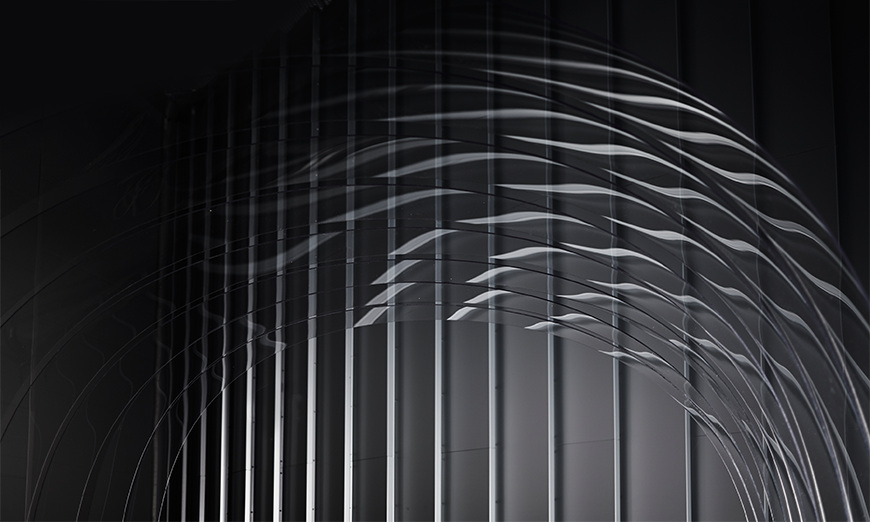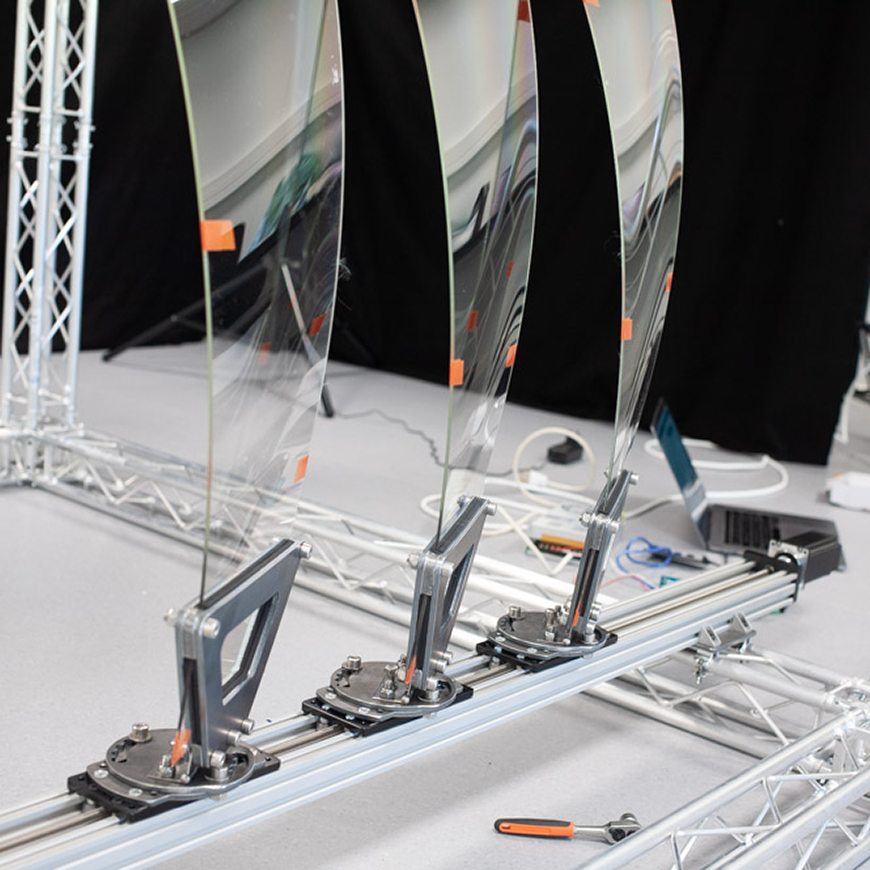Kinetic Environments is a research area in the section of Civil and Architectural Engineering. It is led by Hugo Mulder.
Research in this area is design driven and explores architectural movement (deliberate movement of architecture) as a tectonic phenomenon, considering material technology, mechanisation, structural mechanics, building automation and human occupation.
Developing from specialist building engineering practice, the focus of this research area is the transition towards a sustainable built environment that is flexible, adaptable and humane.
Besides long-standing academic practices, Kinetic Environments seeks to investigate and disseminate through a methodological framework that significantly employs physical prototyping.
Two research projects are currently underway: (1) experimental research in kinetic thin glass for applications in building envelopes, and (2) speculative research exploring the dynamics in occupant-building-environment relations.
Research in this area relies on a network of collaborators in industry and institutions, including Arup, AGC, GXN, and the University of Brighton.
Key publications for the work on thin glass:
Mulder, H. M. (2022). Kinetic Thin Glass [physical prototype, glass, steel, aluminium, motor]. Exhibition at the 5th ICSA conference at the Department of Architecture, Design & Media Technology of Aalborg University.
Mulder, H. M. (2022). Kinetic Thin Glass Building Envelope. In Structures and Architecture A Viable Urban Perspective? (pp. 297-299). CRC Press.
Key publications for the work on dynamic occupant-building-environment relations:
Mulder, H. (2018). Enactive Architecture: Considering the Role of Architectural Movement in Building Cognition. IT-Universitetet i København.
Mulder, H. (2022). Building cognition through material engagement. Frontiers of Architectural Research. https://doi.org/10.1016/j.foar.2022.02.008

